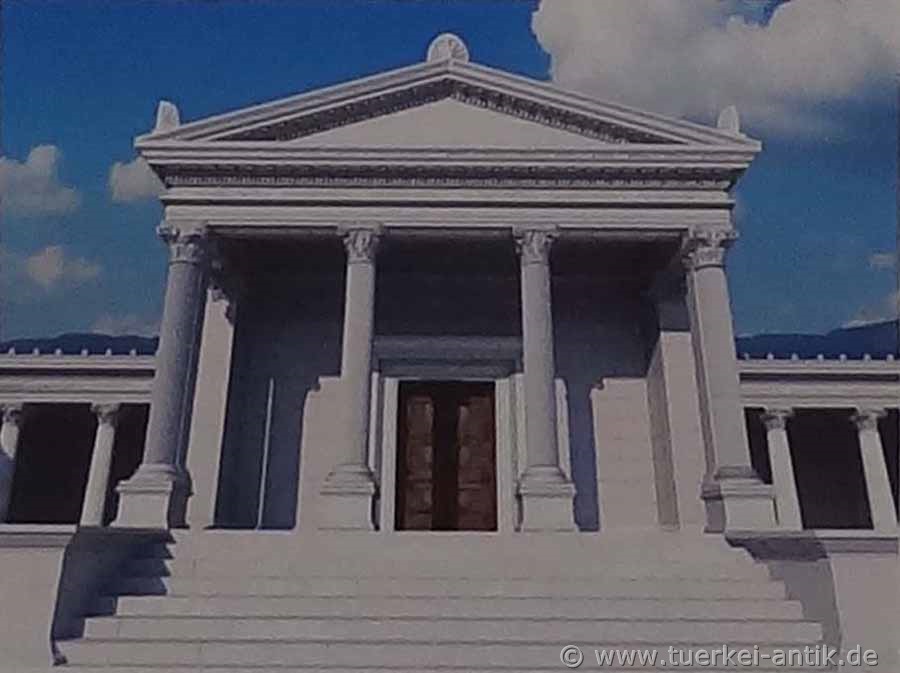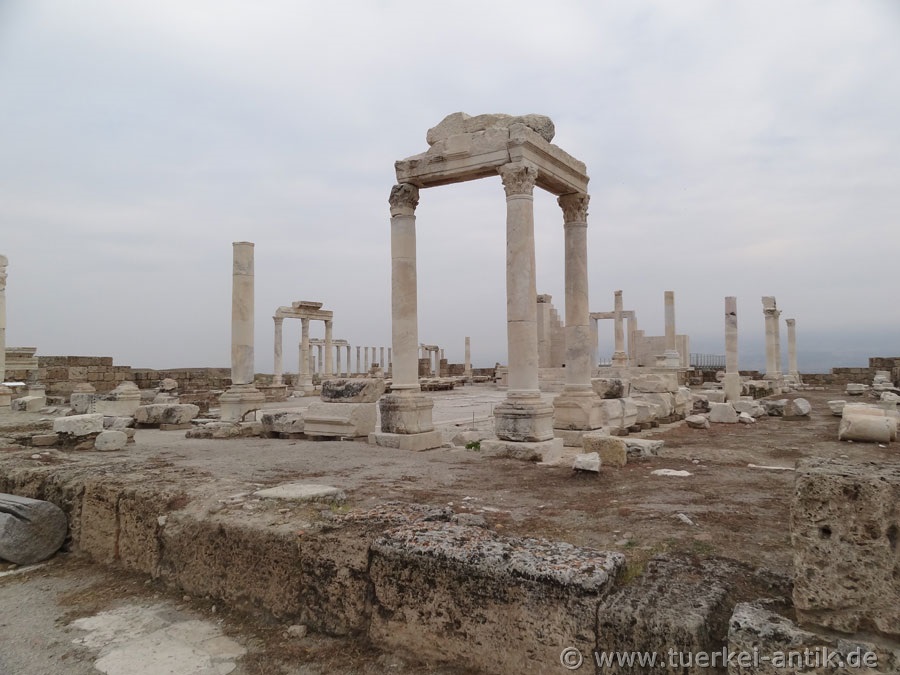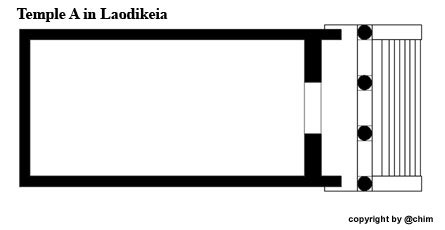 |
|
Antike Tempel in der Türkei Laodikeia |
||||||||||||||||||||
|
|
|
|||||||||||||||||||
|
||||||||||||||||||||
|
The so-called Temple A was built in the first century A.D. and extended during the reign of Diocletian (284-305). Temple A was integrated into an inner courtyard surrounded by stalls. The terrible earthquake of 494 also caused the temple to collapse. After the catastrophe, large parts of the city served as a quarry. However, the farm remained in use until the great earthquake in the early seventh century. Only the front could be reconstructed on the basis of the remaining building remains. |
||||||||||||||||||||
| Apollo, Artemis und Aphrodite | ||||||||||||||||||||
|
Apollo is in Greek and Roman mythology the god of light, healing, spring, moral purity and temperance, as well as prophecy and the arts, especially music, poetry and singing; he was also the god of healing and the god of archery. Born in Didyma, the son of Zeus, the father of the gods, and Leto, the goddess (Latin: Latona), like his first-born twin sister Artemis (Latin: Diana), he belonged to the Olympic gods, the twelve main gods of the Greek pantheon. Aphrodite According to Greek mythology, Aphrodite is the goddess of love, beauty and sensual desire and one of the twelve canonical Olympic deities. In particular, she was revered as the patron saint of sexuality and reproduction, which ensured both the continuity of nature and the continuity of human communities. Its counterpart in Roman mythology is Venus. |
||||||||||||||||||||
| The history of Laodikeia: | ||||||||||||||||||||
 |
||||||||||||||||||||
|
|
||||||||||||||||||||
|
|
||||||||||||||||||||
|
|
||||||||||||||||||||
 |
||||||||||||||||||||
|
|
||||||||||||||||||||
| The glass platform above the underground vault | ||||||||||||||||||||
| Photos: @chim | ||||||||||||||||||||
| Translation aid: www.DeepL.com/Translator | ||||||||||||||||||||
| Source: Wikipedia and others | ||||||||||||||||||||
|
|



